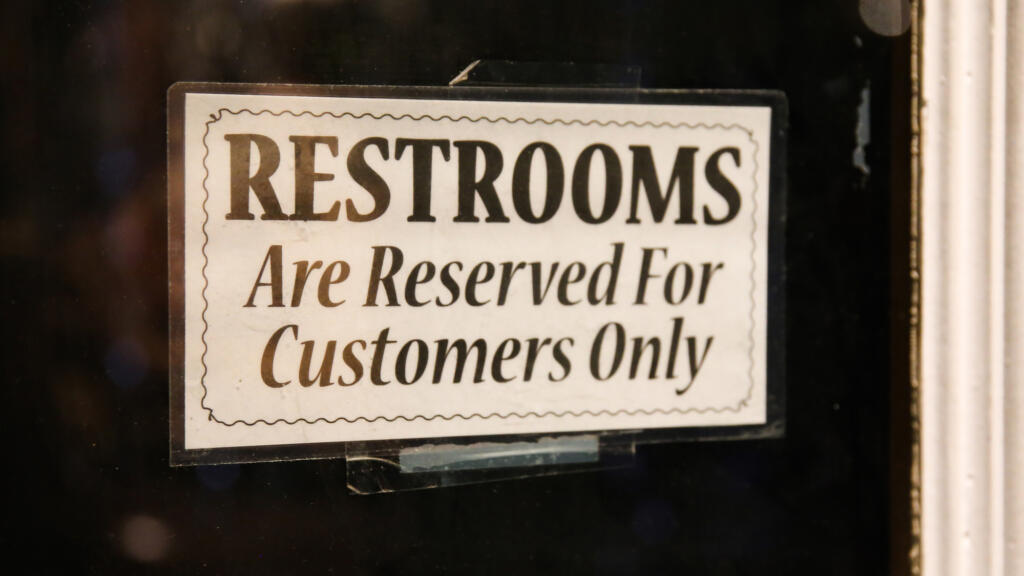When nature calls, maybe the nearest toilet is just down the hall. Or if you’re out and about, maybe you stop at a coffee shop. For people experiencing unsheltered homelessness, it’s not always so easy.
Public restrooms in the United States are few and far between. Locally, it’s no different. According to the Public Toilet Index, Washington has, on average, 24 public toilets per 100,000 people. And for people experiencing homelessness, the number of accessible restrooms is far fewer.
This lack poses an ever more urgent problem. In Vancouver, the number of homeless people has grown 43 percent from 2021 to 2022, according to system data from the Council for the Homeless. Although portable toilet facilities are available near encampments and some nonprofits offer facilities, they’re not always handy. Having a safe place to “go” is a matter of health and human dignity, according to people experiencing homelessness.
“Basic hygiene is a must. Bathrooms are a must,” said Alicia Martinez, who has been homeless for six years. “It’s a human right.”
Accessible toilets
The Columbian walked along Vancouver streets to ask some 20 people experiencing unsheltered homelessness a question both simple and troublesome: “Where do you go to the bathroom?”
Most said they use a variety of options — portable toilets, nearby gas stations, community centers or friends’ houses — but added the lack of public restrooms often leaves them with no choice but to urinate and defecate outdoors.
Homeowners and businesses have called The Columbian to complain that it’s a threat to public health.
“It may be unpleasant, it may be a nuisance, but it’s not really a risk factor for communicable disease, because you have to think of some way to ingest that,” said Dr. Alan Melnick, Clark County Public Health director.
That’s more likely when people are living in close quarters and don’t have a way to wash their hands. Then shigella or E. coli infections – which can cause diarrhea – can spread, Melnick said.
Tillman Jay said he uses the bathroom at a friend’s home — who lives in an apartment block about two blocks away. He said it’s not really a problem for him.
One resident who lives in a small encampment downtown said he uses one of the two portable toilets nearby outside Share House, a men’s shelter. But sometimes he has to go outside at night or first thing in the morning. He said it makes him feel like an animal.
Each encampment in Vancouver has two to three portable toilets on-site, but several residents told The Columbian they avoid those facilities.
Vincent Mendez said he doesn’t use the portable restrooms near his encampment because they are usually filled with trash. He will wait to use the restrooms at Share House during cafeteria time or at a local bar that lets him in when it opens. Residents living near the encampment said the portable toilets are often filled with trash.
Jamie Spinelli, homeless response manager for the city of Vancouver, said that the toilets’ conditions can sometimes be attributed to mental health conditions of those who use them. She recalled someone whose mental illness manifested as an aversion to holes, so they filled the port-a-potty hole with clothing. Spinelli also said that many people living outside have chronic health conditions, which may further people’s need for bathroom access.
The Columbian also spoke with people living away from encampments who said they walked to the closest community center or grocery store, an average of one-third of a mile away.
“In this effort to stay away from people, they’re also away from accessible bathrooms,” Spinelli said. “Surely we have all had situations where you got to go and it’s easy to go right around the corner from (the) bedroom.
“But they don’t always have that.”
‘Scared of being outside’
On a hot fall day, Spring Younce and her partner found shade on a bridge in west Vancouver. The pair often use the toilet at nearby establishments. But the businesses are closed at night, and when they are open, proprietors often want visitors to buy something before using the restroom.
“Sometimes we get in trouble. It’s usually because it’s hectic inside or it’s full,” Younce said. “Or sometimes there’s a manager that doesn’t like people to use the restroom without you buying something.”
In 2018, Starbucks updated its restroom policy to make the chain’s facilities open to anyone, even if they’re not buying anything. A study found that after the new policy went into effect, public urination citations decreased near Starbucks locations.
Younce said she thinks some businesses might have had negative experiences in the past — people using illicit substances in the stalls or staying in there for prolonged periods.
“Sometimes people have no place to go. They’re scared of being outside and so they sit in the bathroom as long as they can,” she said.
Martinez said she has been denied or told to buy something when she has asked to use businesses’ restrooms.
“You don’t want us (urinating and defecating) behind your building but won’t let us use yours,” Martinez said. She said lack of access hits particularly when she’s menstruating.
‘Head on a swivel’
A cluster of small buildings under Portland’s Morrison Bridge demonstrates a different approach. Hygiene4All, a Portland nonprofit founded in 2020, created a fenced-in site with toilets, showers, clothing exchange and a place for Portland’s homeless population to just sit. People who have experienced homelessness help run the site. The nonprofit’s executive director, Sandra Comstock, said Hygiene4All could be a model for the nation.
“It’s not just about bathrooms,” Comstock said. “It’s also about creating a place of respite and sanctuary, where people know they’re going to not only be given a bathroom, but sincerely welcomed into the space and that they can sit for a few minutes. They constantly live with their head on a swivel.”
Comstock once chatted with a woman experiencing homelessness in Portland who was told she would have to buy a cup of coffee to use a cafe’s bathroom.
“She then had to go (to the bathroom) outside and someone walked by her and she said, ‘I’m sorry, I don’t have anywhere else to go,’” Comstock recalled. “She said to me, ‘Stores leave out bowls of water for dogs, and (poop) bags for dogs. Sometimes I wish I were a dog because they get treated better than human beings who are homeless.’ ”




